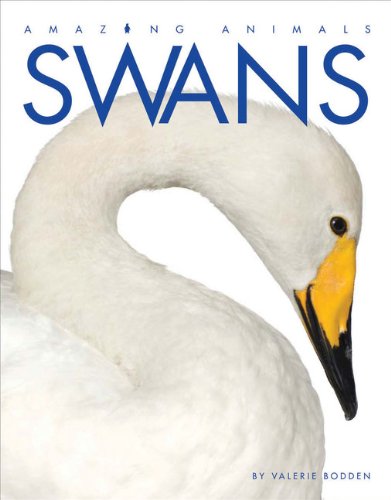-
Those Excellent Eagles
Jan Lee Wicker, Steve Weaver, H G Moore
Paperback (Pineapple Press, April 1, 2006) P
P
-
Giraffes
Valerie Bodden
Paperback (Creative Paperbacks, Feb. 18, 2020)From winged bats to furry wolves, and from leaping dolphins to stalking lions, the world of animals is wonderfully diverse. This popular series travels the planet to study these and other fascinating mammals, birds, reptiles, fish, and invertebrates. Beautiful photos are paired with STEM-appropriate text to examine the featured creature's appearance, habitat, behaviors, and life cycle. Each reissued title also presents a folk story that people have used to help explain the animal's appearance or behavior. This revised edition surveys key aspects of giraffes, describing the towering mammals' appearance, behaviors, and habitats. A folk tale explains why these creatures have long necks. P
P
-
Those Voracious Vultures
Marta Magellan, Steve Weaver, James Gersing, Ron Magill
Paperback (Pineapple Press, Sept. 1, 2008)Vultures are voracious! They eat a lot of yucky stuff—and that's good because it keeps things tidy. Here are 20 questions and answers about these clean-up birds so you'll know all about them. You'll learn why vultures' heads are bald, why vultures vomit, why vultures don't get sick when they eat rotten meat, why they circle in the sky, what baby vultures look like (cute fuzzballs), and whether turkey vultures gobble (no!).Make a turkey vulture mobile, a vulture collage, and connect the dots to reveal a Eurasian vulture.< < Previous in seriesNext in series > >See all of the books in this series O
O
-
Amazing Animals: Vultures
Kate Riggs
Paperback (Creative Paperbacks, Sept. 15, 2015)A basic exploration of the appearance, behavior, and habitat of vultures, the carrion-eating birds of prey. Also included is a story from folklore explaining why vultures are bald. N
N
-
Those Colossal Cats
Marta Magellan, Steve Weaver
Hardcover (Pineapple Press, Oct. 1, 2009)Some cats are small, like the ones we keep as pets. Others are truly colossal, like lions, tigers, and leopards.This charming book offers 20 questions and answers about these big cats so you'll know all about them.What's the difference between big and small cats?Do all big cats roar and purr?Why do tigers have stripes and leopards have spots?Which cat is the fastest?Do big cats like to swim?What are big cat babies like?Why do cats lick their fur?Color your own tiger mask and make big cat finger puppets.< < Previous in seriesNext in series > >See all of the books in this series O
O
-
Time to Eat: Animals Who Hide and Save Their Food
Marilyn Baillie, Romi Caron
School & Library Binding (San Val, Sept. 15, 1995)None P
P
-
Crocodiles
Valerie Bodden
Hardcover (Creative Education, Jan. 1, 2020)Surveys key aspects of crocodiles, describing their appearance, behaviors, and habitats. Also included is a story from folklore explaining why crocodiles have rough skin. L
L
-
Hippopotamuses
Christina Wilsdon
Paperback (Gareth Stevens Pub Learning library, July 1, 2009)Even though a hippopotamus might look silly, meeting one in the wild is no laughing matter. Hippos are fierce and powerful creatures who are quick to protect themselves. Learn all about these giant animalswhat they eat, why they spend so much time in the water, and how they raise their young. P
P
-
Amazing Animals: Swans
Valerie Bodden
Paperback (Creative Paperbacks, Feb. 2, 2011)None B
B
-
Pelicans
Valerie Bodden
Paperback (Creative Paperbacks, March 12, 2019)From antlered elk to pouched pelicans, and from scouting prairie dogs to upright-swimming seahorses, the world of animals is wonderfully diverse. This popular series—extended to include more Spanish-language titles—travels the planet to study these and other fascinating mammals, birds, reptiles, fish, and invertebrates. Beautiful photos are paired with STEM-appropriate text to examine the featured creature's appearance, habitat, behaviors, and life cycle. Each book also presents a folk story that people have used to help explain the animal's appearance or behavior. A basic exploration of the appearance, behavior, and habitat of pelicans, the long-billed waterbirds. Also included is a story from folklore explaining why some pelicans have white feathers. O
O

